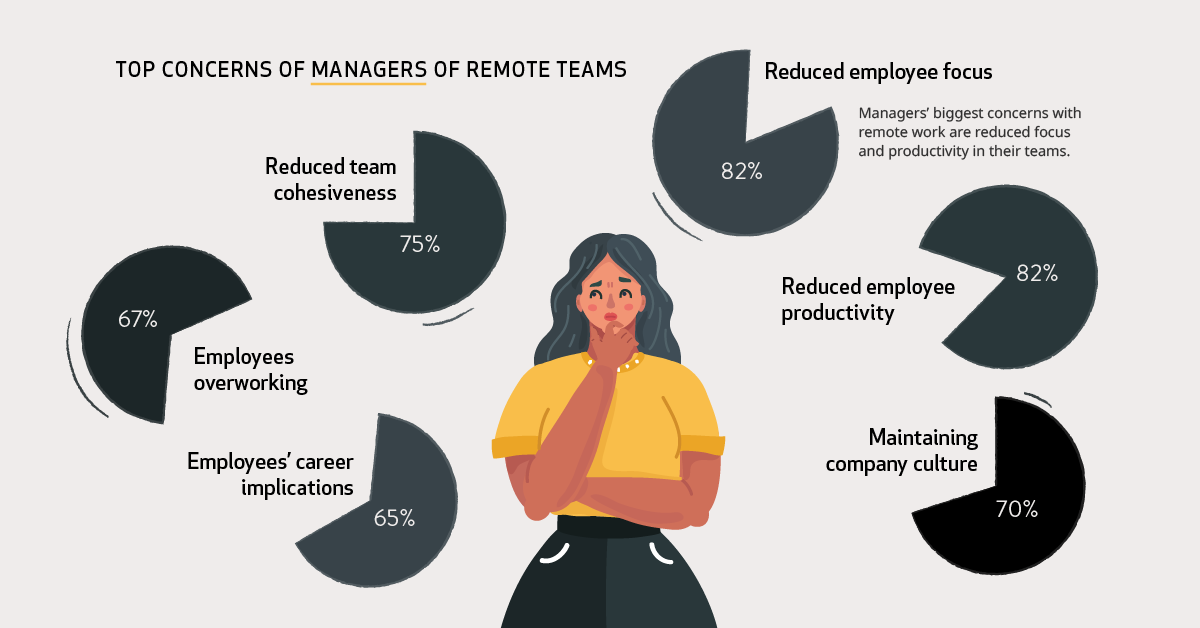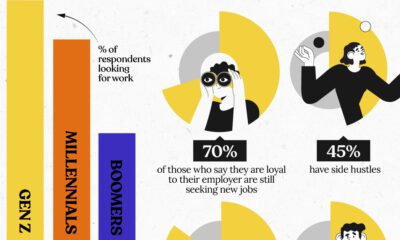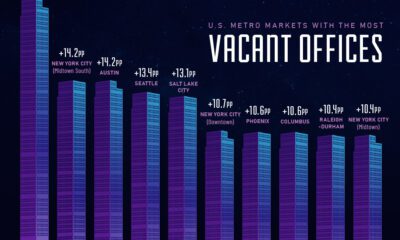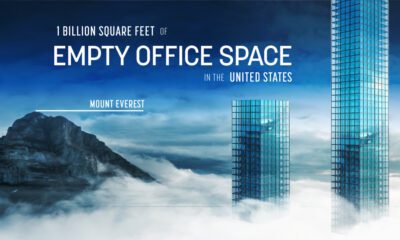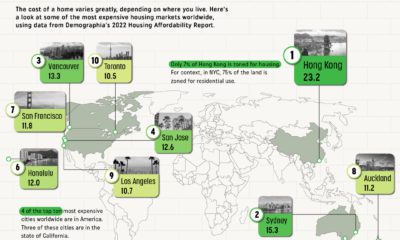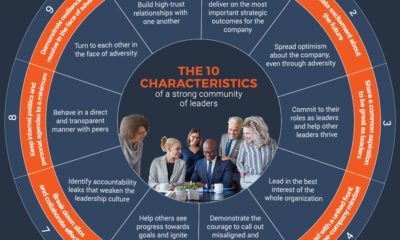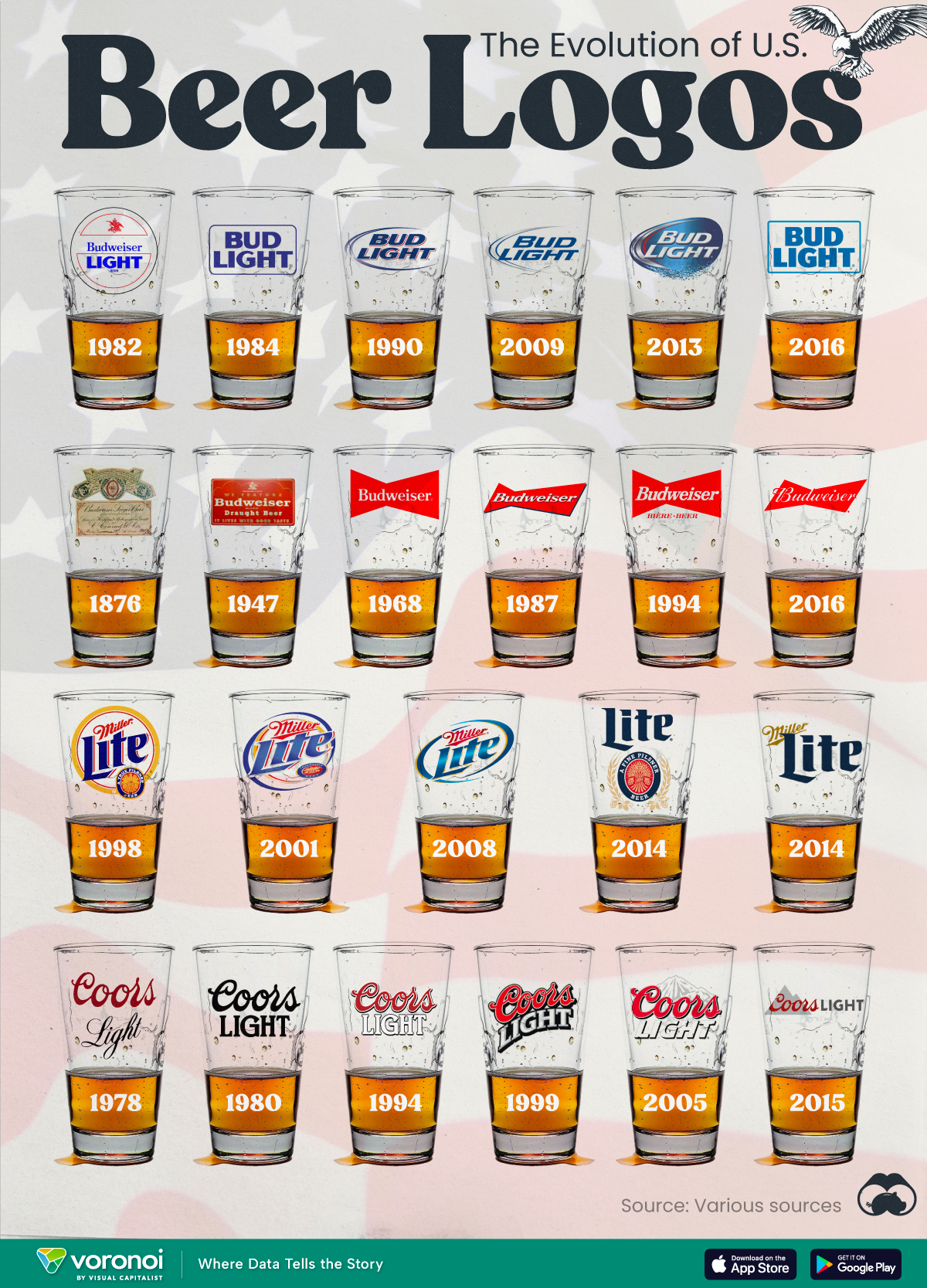Misc
How People and Companies Feel About Working Remotely
According to the U.S. Census Bureau, nearly one-third of the U.S. workforce, and half of all “information workers”, are able to work from home. Though the number of people working partially or fully remote has been on the rise for years now, the COVID-19 pandemic may have pressed the fast-forward button on this trend.
With millions of people taking part in this work-from-home experiment, it’s worth asking the question – how do people and companies actually feel about working from home?
The Flex Life
It’s no secret that people value freedom of choice. A whopping 98% of people would like to have the option to work remotely for the rest of their careers.
Aside from working in sweatpants, what are the things people like about working from home?
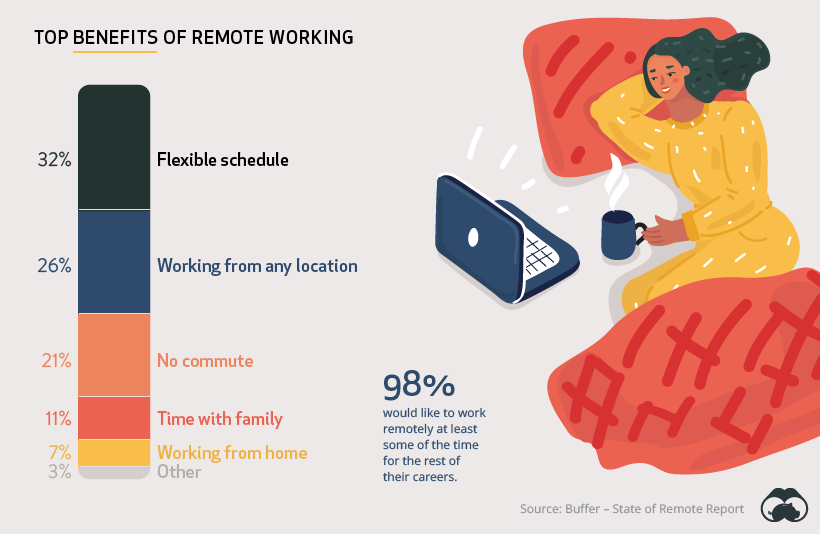
A flexible schedule, the ability to work from any location, and no more commuting were the top reported benefits.
Of course, not everything is positive about working from home. Here are some of the challenges people face as they work remotely.
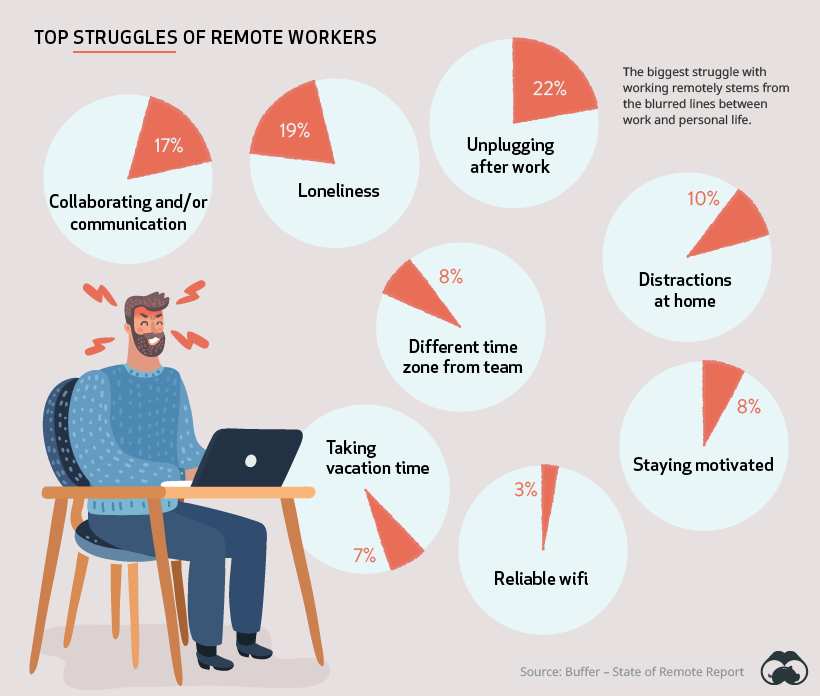
The top issue faced by remote workers was “unplugging” from work. Without the clear-cut change of location and defined office hours, many people had a tougher time clearly dividing their personal and professional time.
As well, the lack of person-to-person communication can be a challenge for some people. In fact, one-third of people were concerned that the full extent of their professional efforts wouldn’t be appreciated because of a lack of in-office contact.
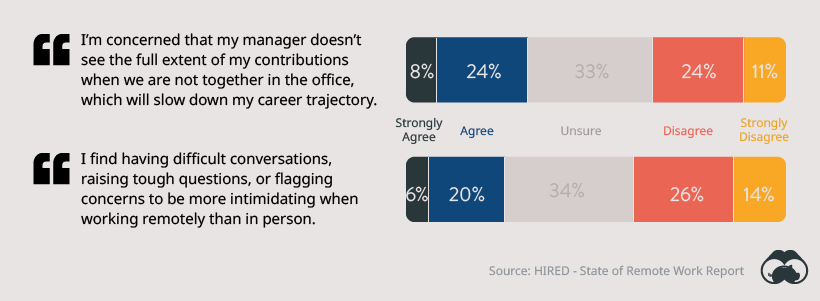
For the majority of people, having tough conversations via phone or teleconferencing software was actually viewed as a positive development.
Barriers to Implementing a Remote Work Policy
Despite the popularity of remote and flexible working, not every company has embraced the concept. Here are some of the reasons why.
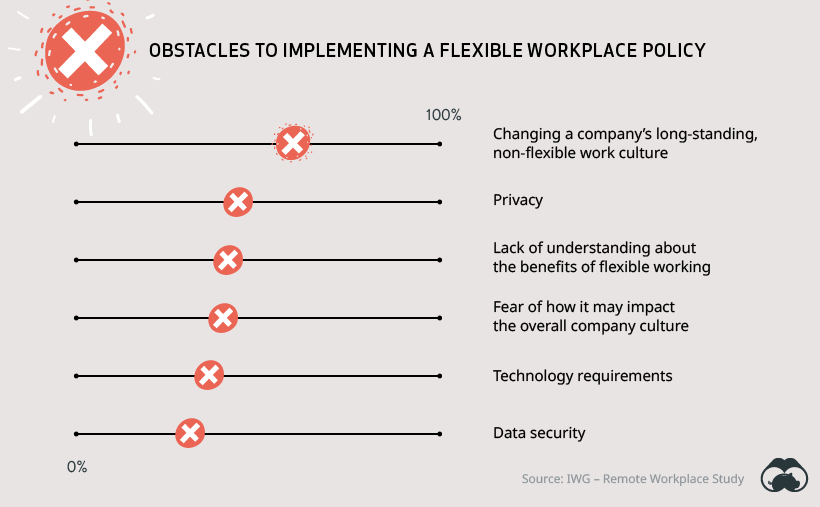
While there can be technical or security-related reasons behind remote work resistance, a major barrier is simple resistance to change. Over 50% of companies that didn’t have a flexible or remote workplace policy cited “longstanding company policy” as the reason. In other words, that is just the way things have always worked.
Here are the reservations managers have with remote work:
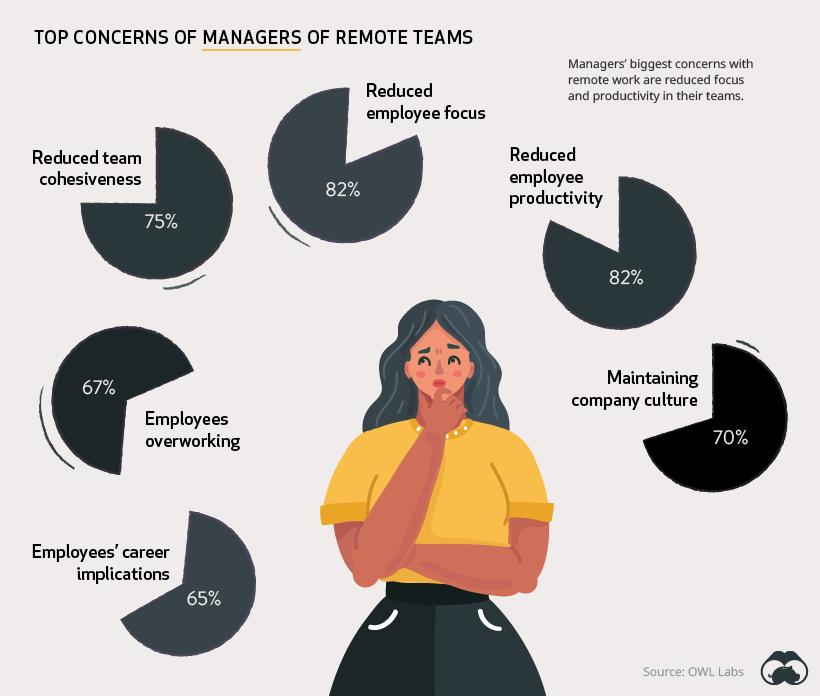
Managers are worried that productivity and focus will be diminished if people are working in more informal locations, such as home or a cafe. Also, if people aren’t working in the same physical location, managers feel that team cohesiveness and company culture could suffer.
On the flip side, the cost savings associated with remote work may win over many companies. Research has found that typical employer can save about $11,000 per year for every person who works remotely half of the time. As well, switching to virtual meets in some instances can also be a significant cost savings.
Flexibility: The Ultimate Perk?
Location flexibility isn’t just a way to keep current employees happy. Companies that don’t embrace flexible working may find themselves at a disadvantage when recruiting new talent. Nearly two-thirds of candidates say that having a choice of work location is a key consideration in choosing an employer.
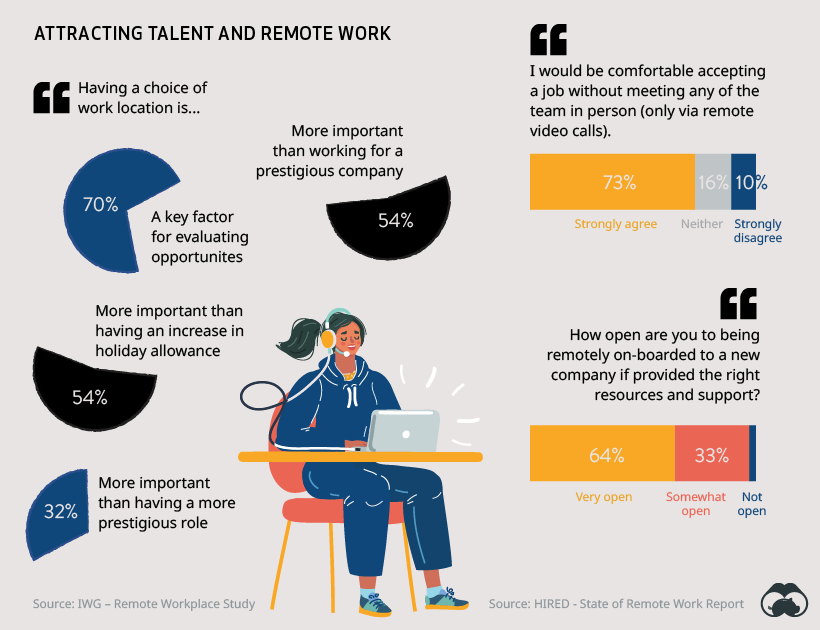
Lockdown measures have highlighted the value of workplace flexibility – particularly for people with kids. A total of 86% of parents now want to work flexibly, compared to 46% pre-coronavirus.
As the economy slowly begins to reopen, it remains to be seen whether or not COVID-19 accelerated inevitable trends in workplace culture. If so, taking Zoom calls in sweatpants may become the new normal for millions of workers.
Misc
The Evolution of U.S. Beer Logos
In this graphic, we analyze the evolution of popular U.S. beer logos like Budweiser, Coors Light, Bud Light, and more.
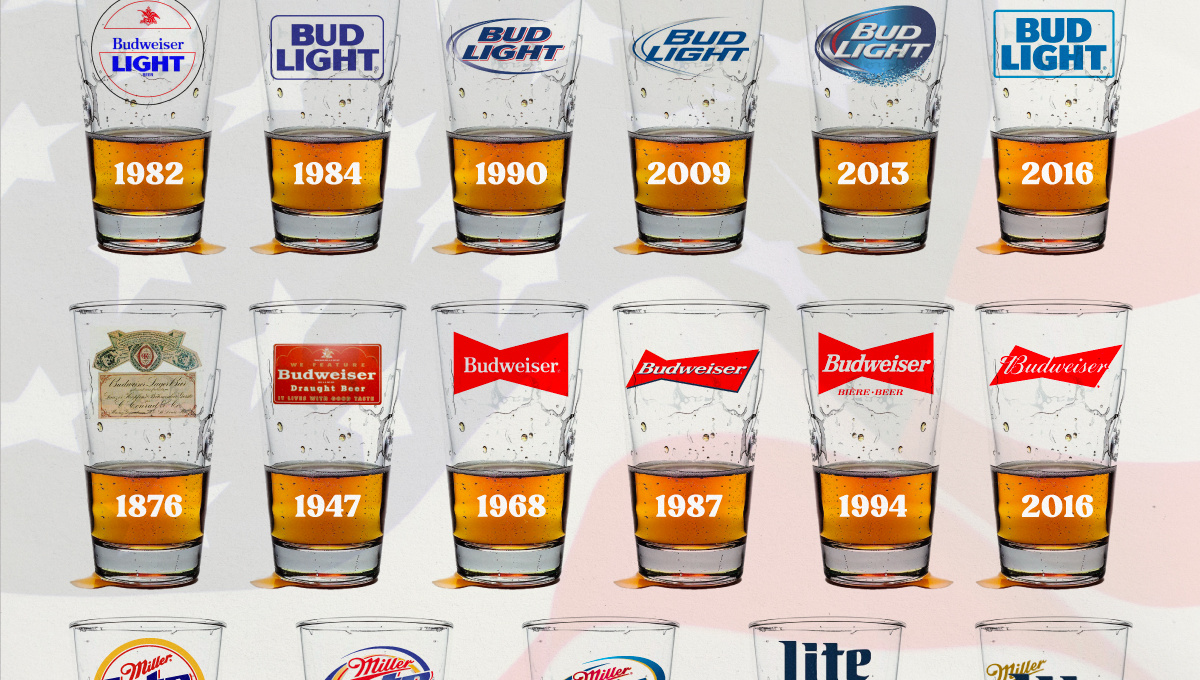
The Evolution of U.S. Beer Logos
This was originally posted on our Voronoi app. Download the app for free on iOS or Android and discover incredible data-driven charts from a variety of trusted sources.
Despite selling a popular product, beer companies have to be creative to stand out in a competitive market.
In this graphic, we analyze the evolution of some U.S. beer logos based on various sources. We chose brands based on a mixture of criteria, including popularity (based on YouGov surveys), availability of logo assets, and those with interesting developments.
Bud Light Back to the ’80s
Despite recent backlash and calls for a boycott after sending a commemorative can to transgender influencer Dylan Mulvaney, Bud Light remains one of America’s best-selling beers.
The brand of light beer, owned by the Anheuser-Busch company, has switched from its more circular logo with italic letters adopted in the 1990s back to the Bud Light badge of the 1980s. It is composed of heavy uppercase lettering, written in two levels in a shade of blue with the inscription placed on a solid white background and enclosed in a thin rectangular frame.
Miller Lite Goes Old School
After following a similar approach to Bud Light’s branding throughout the 2000s, Miller Lite decided to undergo a major rebranding in 2014.
The company returned to its 1970s roots, once again combining a white can with its original blue, gold, and red logo. The redesign was largely considered a success, given that Miller Lite sales immediately increased following the change.
A Symbol of American Brewing
The oldest brand on our U.S. beer list, the Budweiser logo, has undergone more than 15 changes over the years.
The design of two connected triangles represents a red bow tie, as a symbol of American brewing.
The colors of the Budweiser logo include a vibrant red, which helps the logo stand out and be easily recognizable from a distance. Studies also suggest that the color red stimulates appetite. Meanwhile, the white inscription symbolizes purity and cleanliness.
Curious to learn more about the beer market? Check out this graphic about global beer consumption.
-

 Economy7 days ago
Economy7 days agoRanked: The Top 20 Countries in Debt to China
-

 Demographics2 weeks ago
Demographics2 weeks agoThe Countries That Have Become Sadder Since 2010
-

 Money2 weeks ago
Money2 weeks agoCharted: Who Has Savings in This Economy?
-

 Technology2 weeks ago
Technology2 weeks agoVisualizing AI Patents by Country
-

 Economy2 weeks ago
Economy2 weeks agoEconomic Growth Forecasts for G7 and BRICS Countries in 2024
-

 Wealth2 weeks ago
Wealth2 weeks agoCharted: Which City Has the Most Billionaires in 2024?
-

 Technology1 week ago
Technology1 week agoAll of the Grants Given by the U.S. CHIPS Act
-

 Green1 week ago
Green1 week agoThe Carbon Footprint of Major Travel Methods




